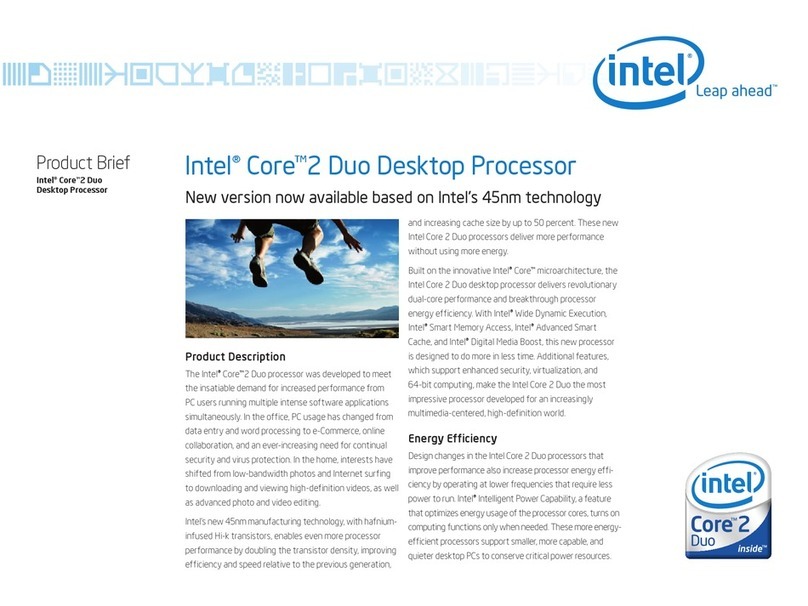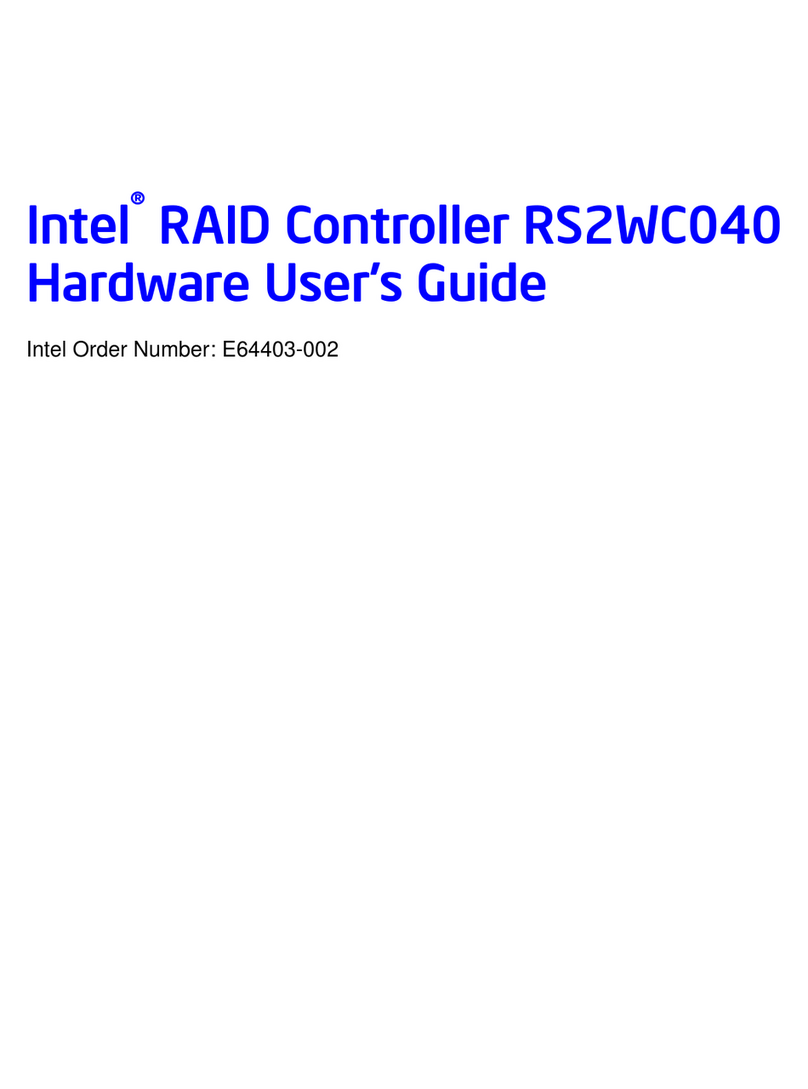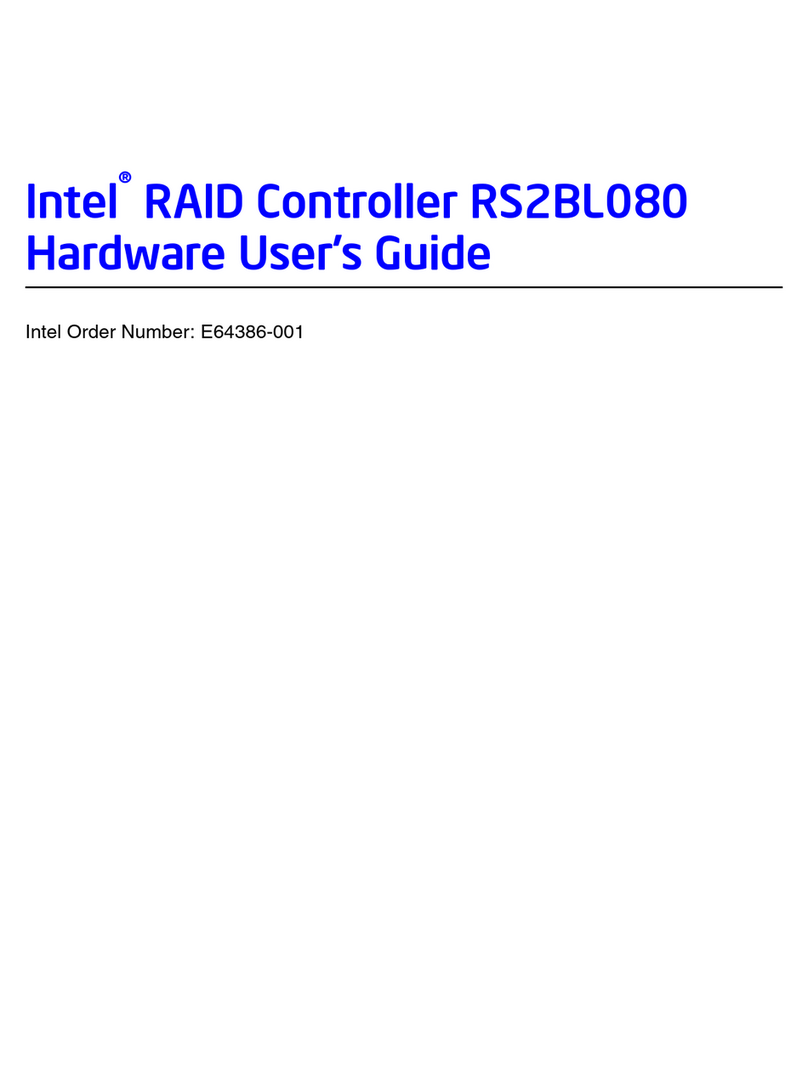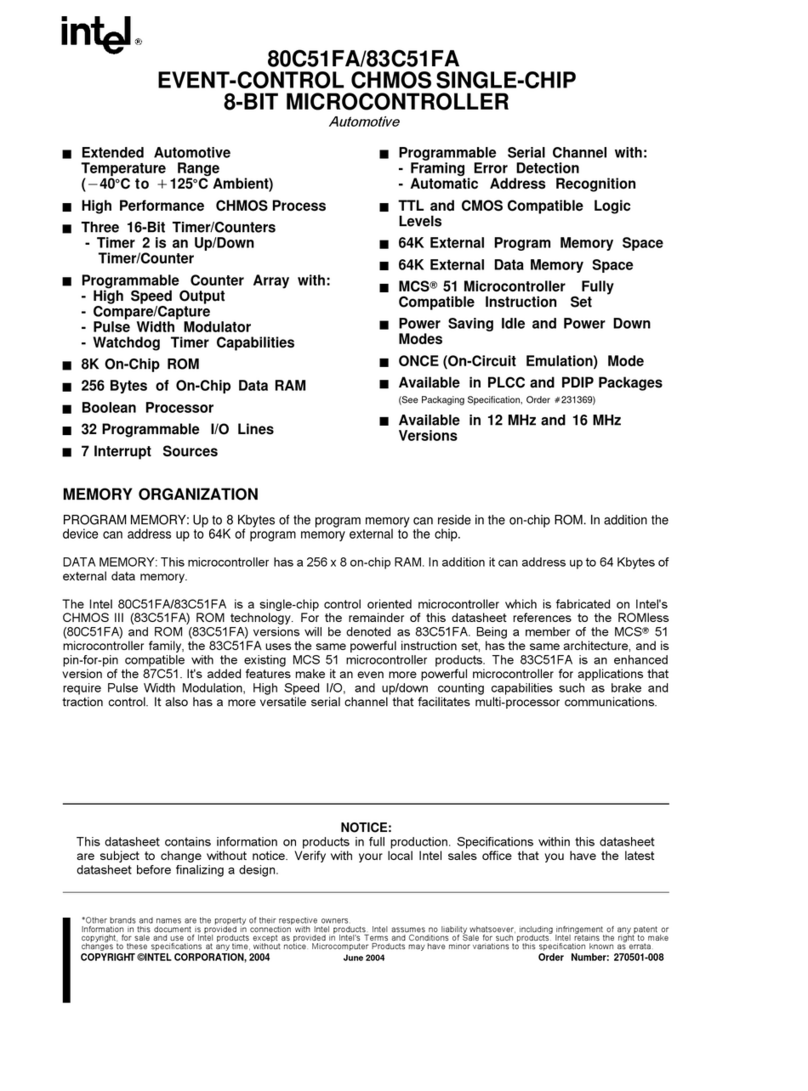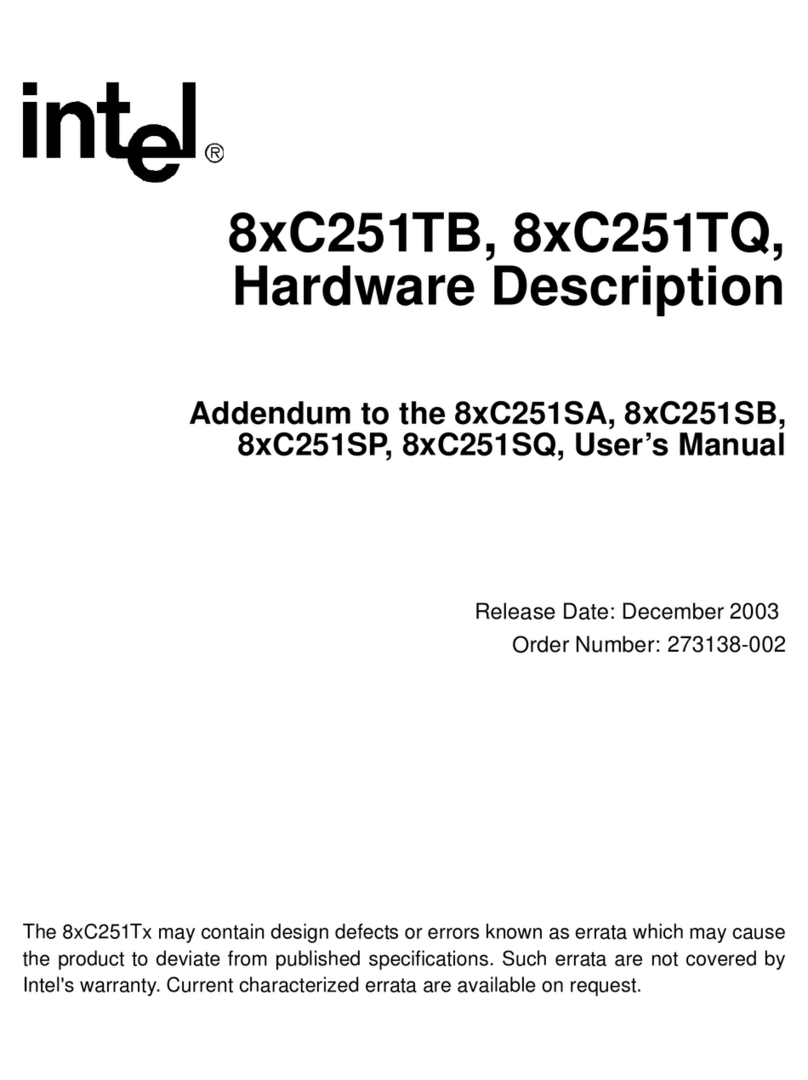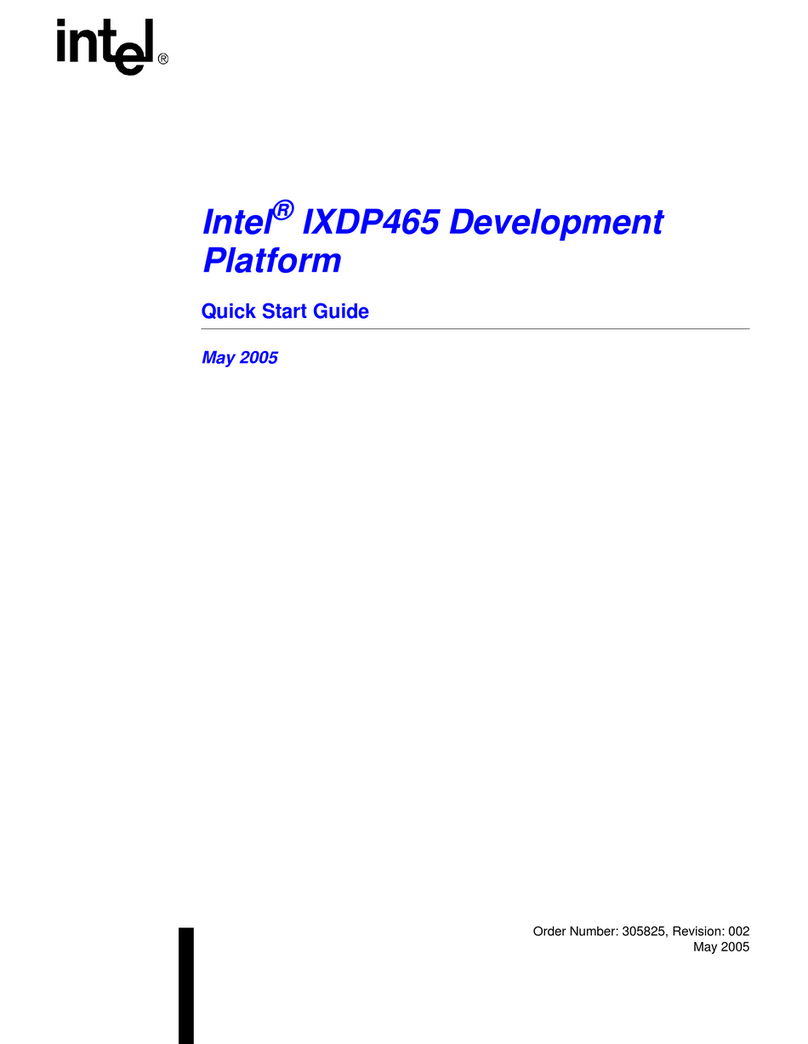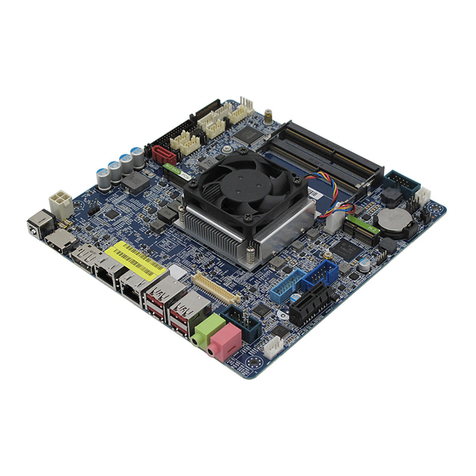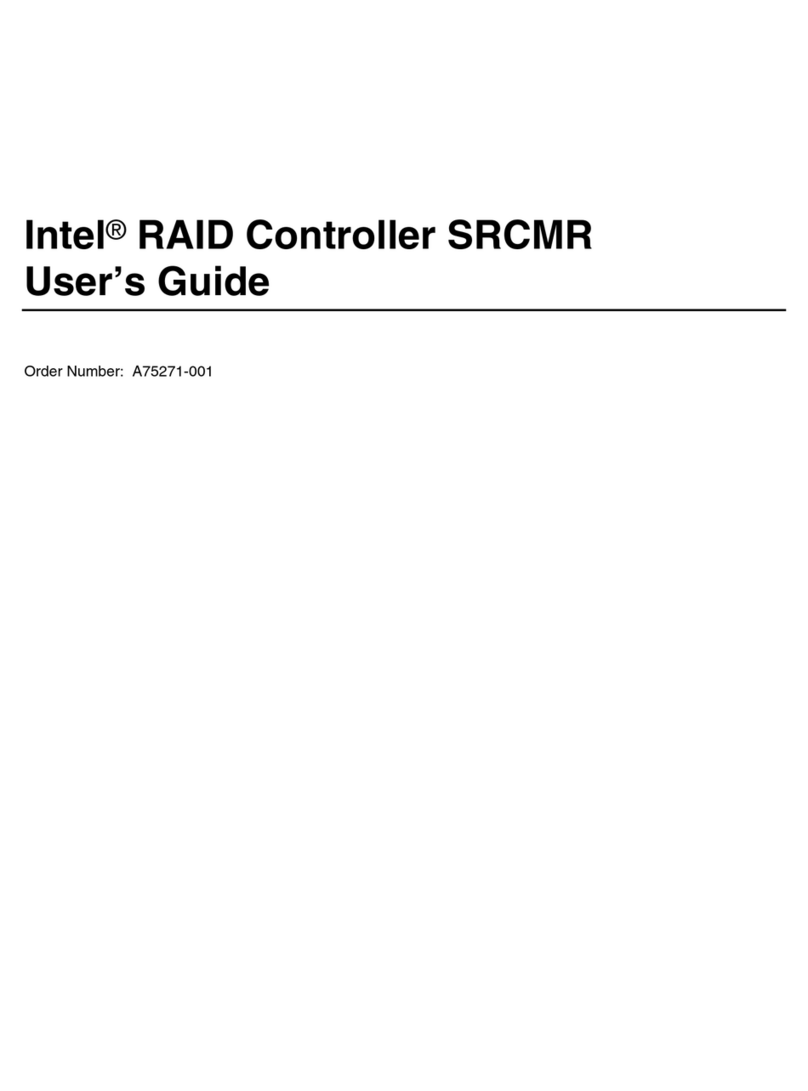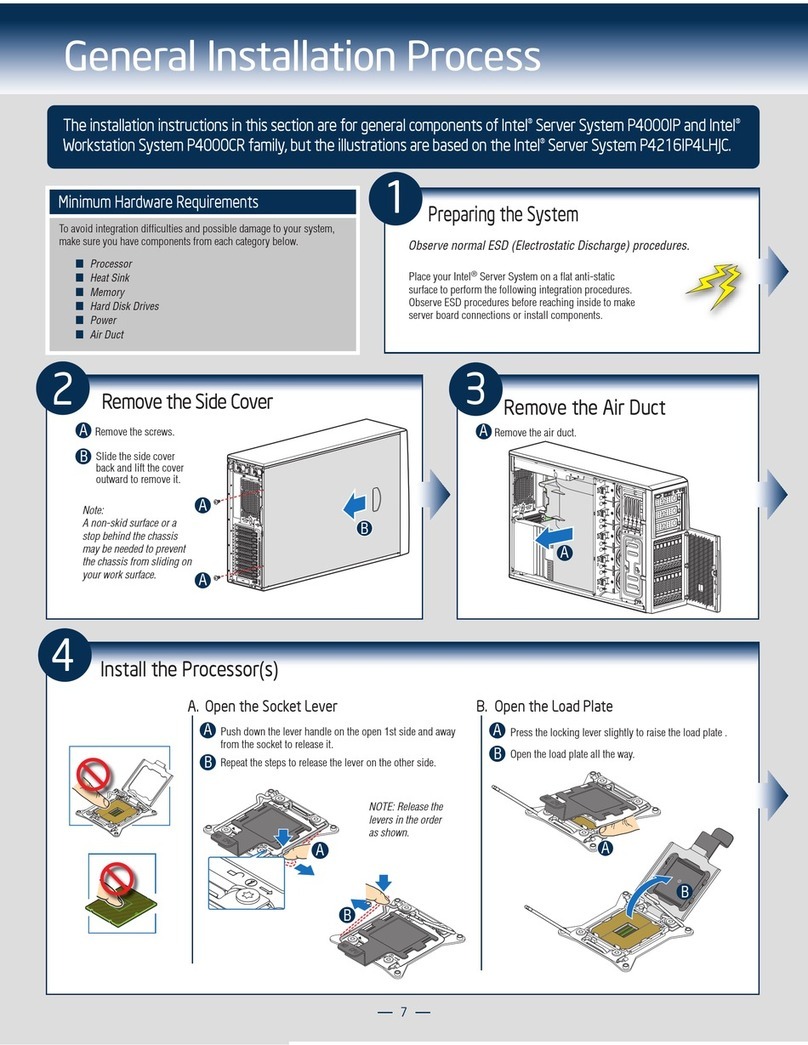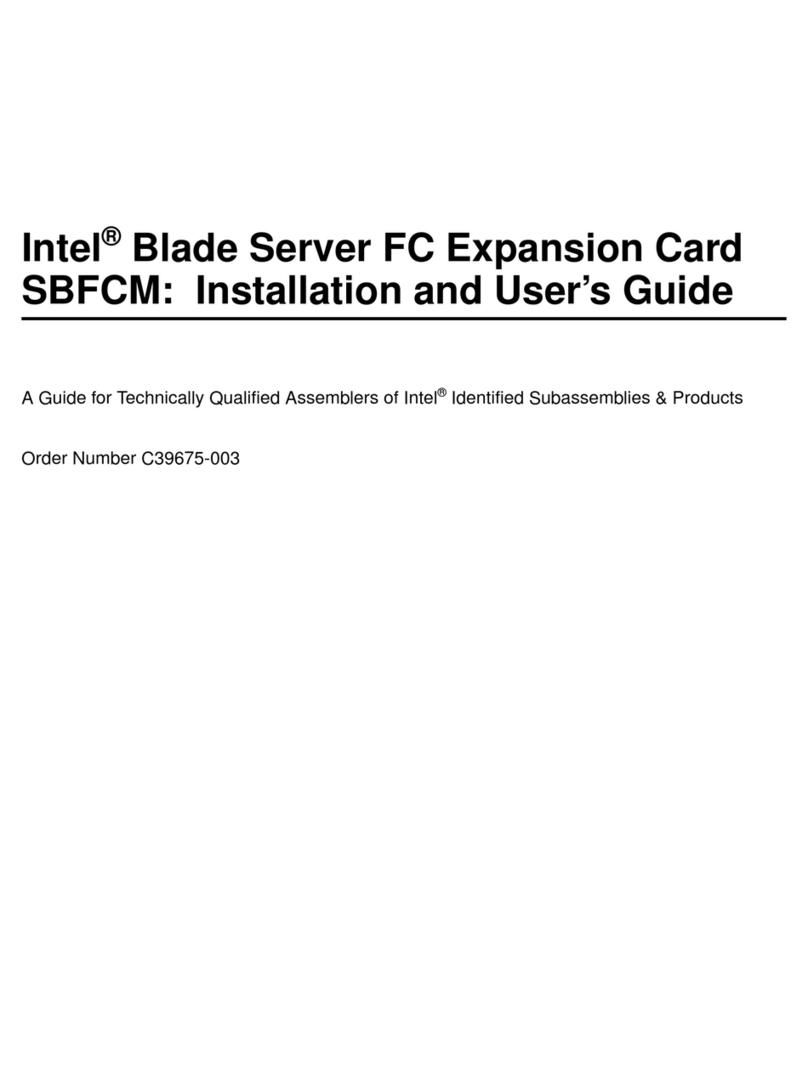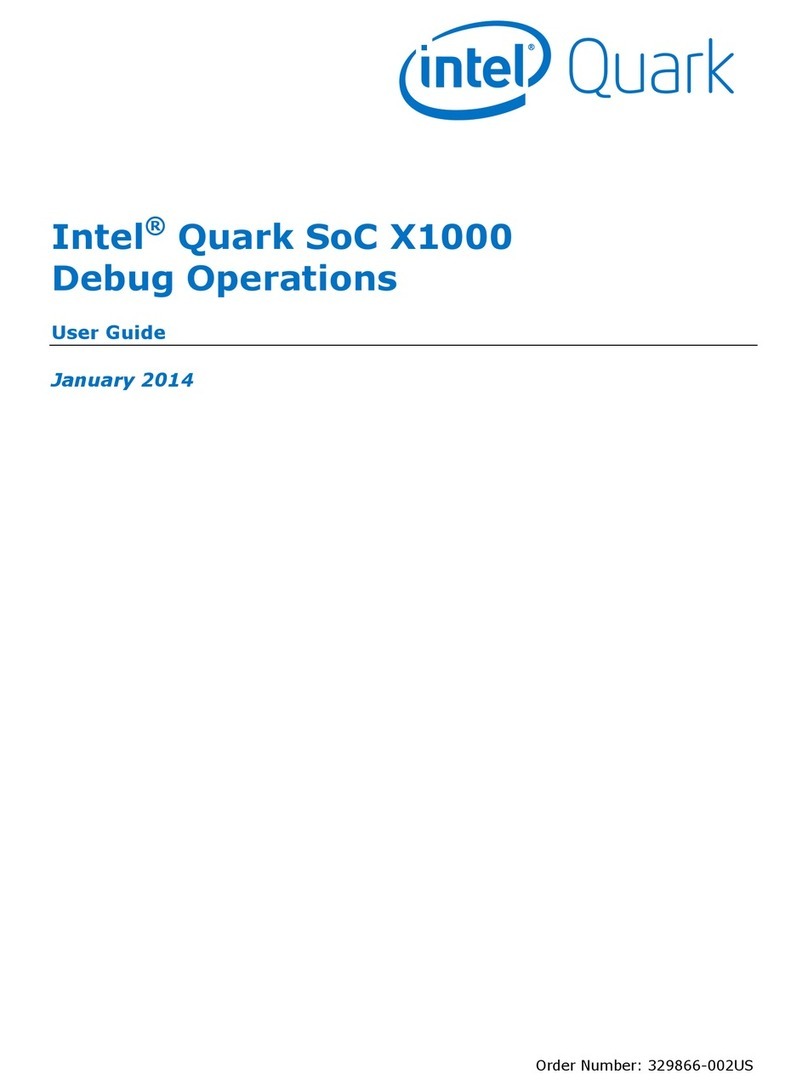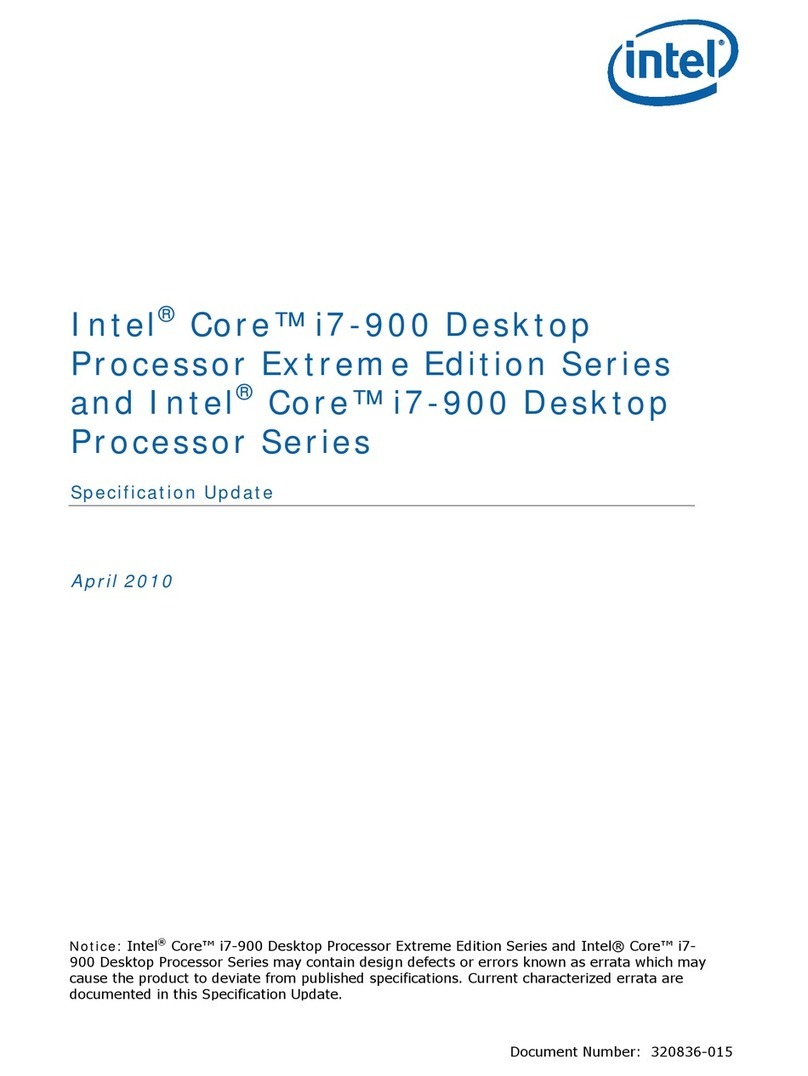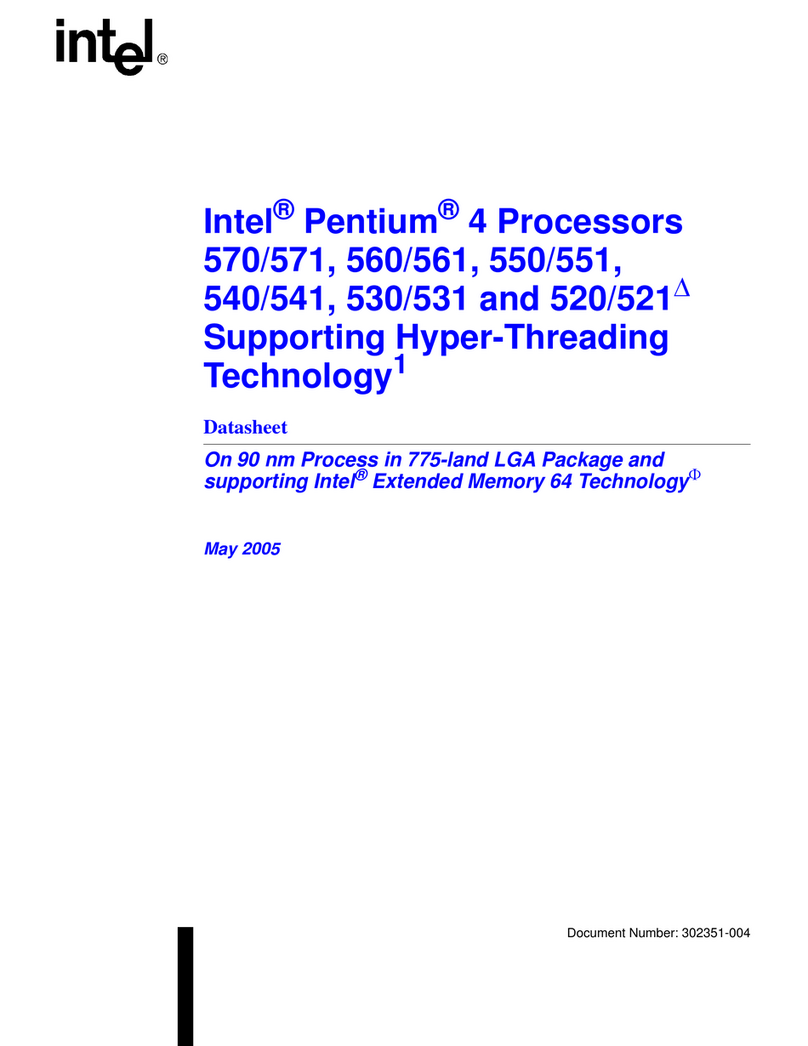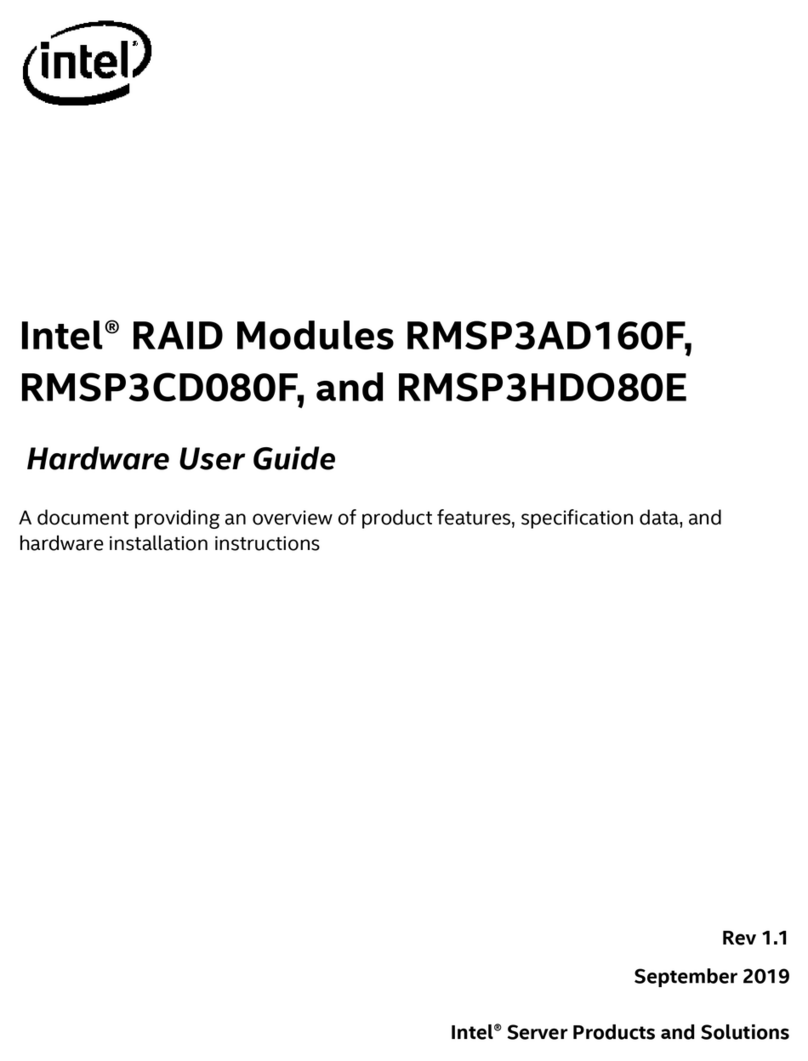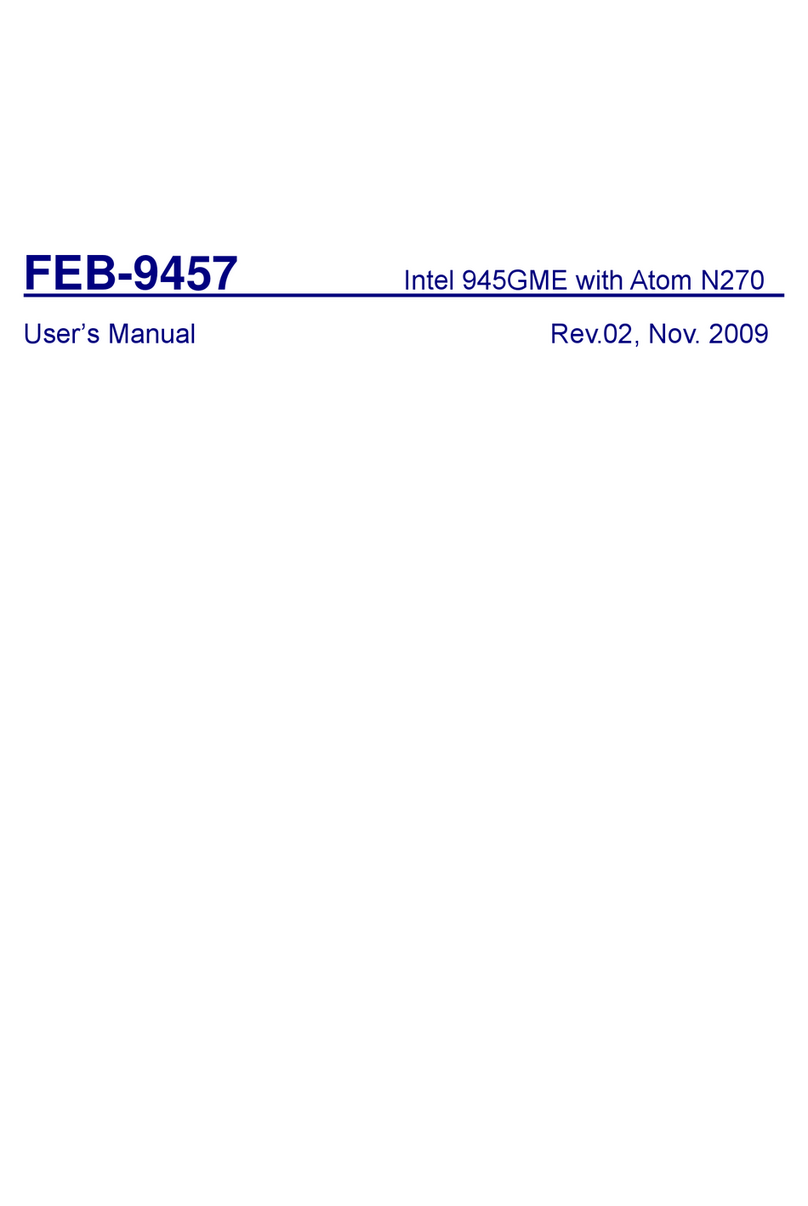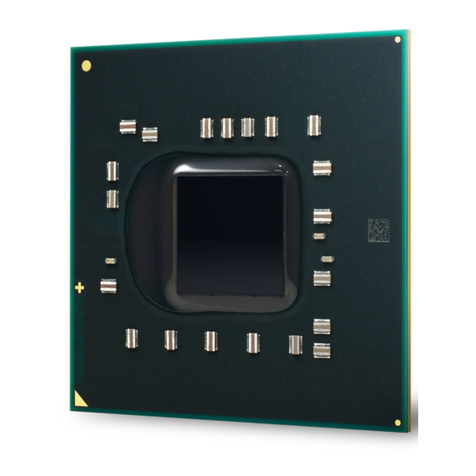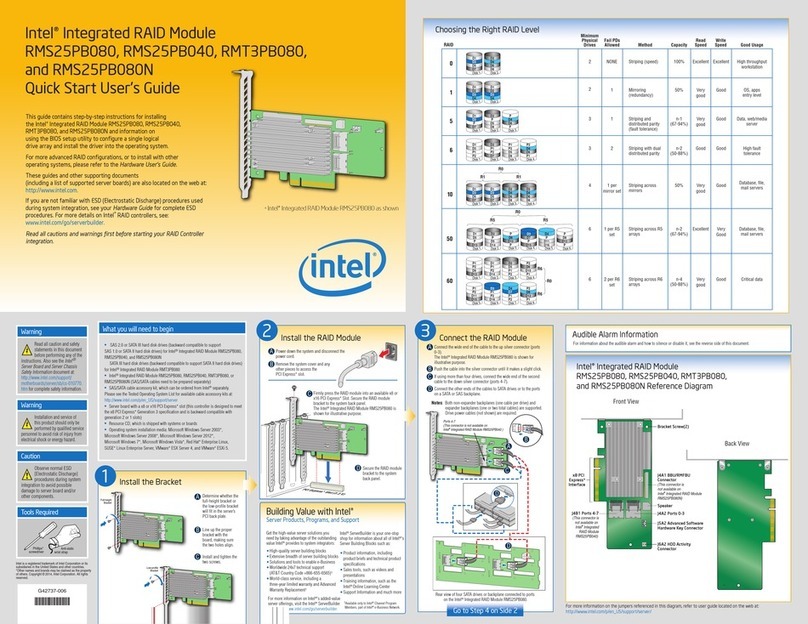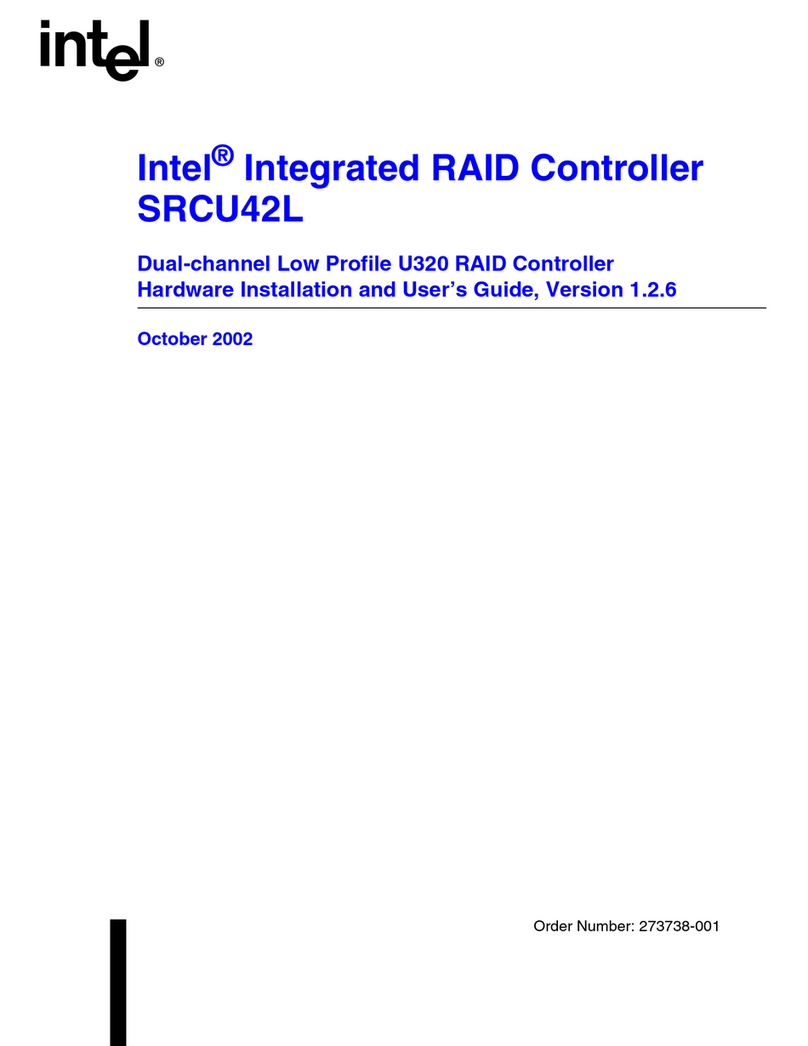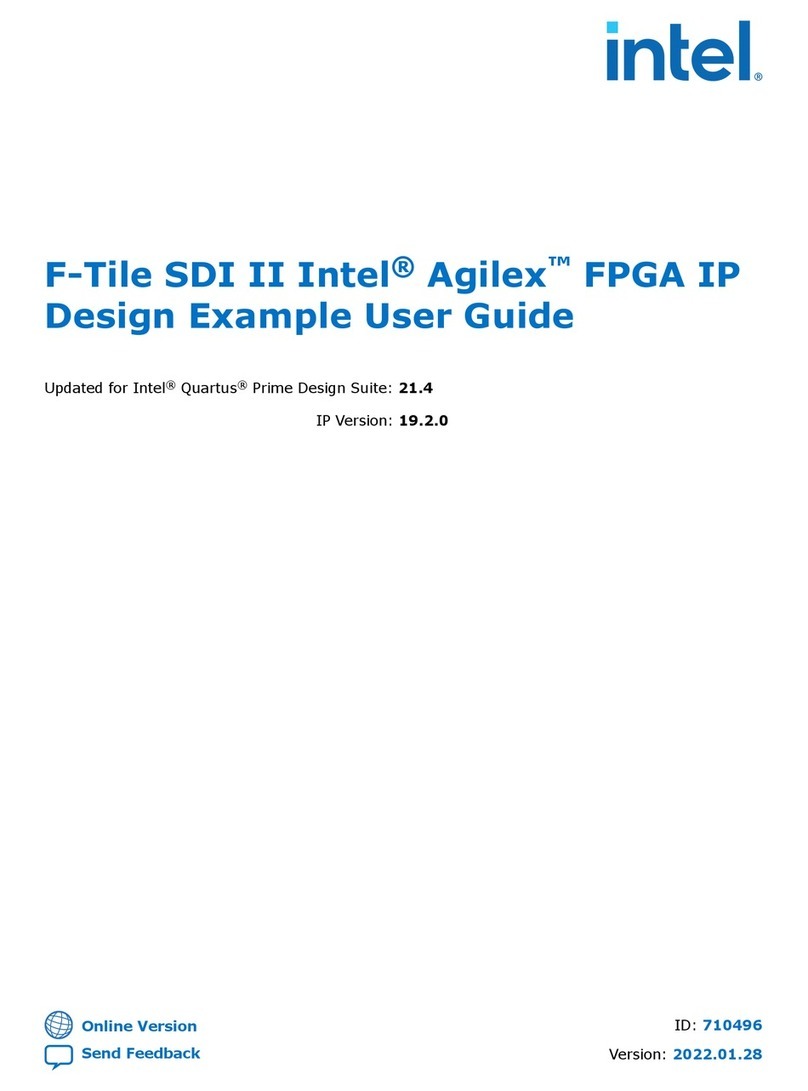
7
• BenchmarkDescriptionforSPECcpu*2006suite(SPECint*_rate_base2006 & SPECfp*_rate_base2006): SPEC CPU2006 is the industry-adopted, CPU-intensive benchmark which
stresses the system processor(s), memory subsystem, and compiler. Derived from 29 real user applications, CPU2006 provides a comparison across the widest practical range of hard-
ware reporting a geometric mean ratio score on a baseline compiled binary.
• Best1-socketSPECfp*_rate_base2006 Intel internal measurement results as of January 7, 2008:
– Intel® Pentium® D Processor platform (score 19.8): Fujitsu-Siemens PRIMERGY* RX100S4 server platform using one Intel Pentium D processor 945 3.40GHz, 4MB L2 cache, 800MHz
bus, 8GB memory (4x2GB DDR2 PC4200E, 2-rank, CL4, ECC), 64-bit SUSE LINUX* Enterprise Server 10 2.6.16.21-08smp, Intel® C++ Compiler for IA32/EM64T version 9.1. Source
www.spec.org/cpu2006/results/res2007q3/cpu2006-20070619-01288.html.
– Intel® Xeon® Processor 3085 platform (score 30.5): Dell* PowerEdge* R200 using Intel Xeon processor 3085 (3.00 GHz, 4 MB L2 cache, 1333 MHz bus), 8 GB (4x 2 GB DDR2-800),
64-bit SuSE* LINUX Enterprise Server 10, Intel® C++ and Fortran Compiler for LINUX32 and LINUX64 version 10.1. Source: www.spec.org/cpu2006/results/res2007q4/cpu2006-
20071210-02855.html.
– Intel® Xeon® Processor X3230 platform (score 42.2): Acer* Altos* G330Mk2 using Intel Xeon processor X3230 (2.66 GHz, 8 MB L2 cache, 1066 MHz bus), 8 GB (4x 2GB DDR2-800),
64-bit SuSE* LINUX Enterprise Server 10, Intel® C++ Complier and Fortran Compiler for LINUX* version 10.1. Source: www.spec.org/cpu2006/results/res2007q4/cpu2006-20071203-
02758.html.
– Intel® Xeon® Processor X3360 platform (score 47.5): Intel® 3210 Chipset-based internal server using Intel Xeon processor X3360 (2.83 GHz, 12 MB L2 cache, 1333 MHz bus, 45nm), 8
GB (4x 2 GB DDR2-800), 64-bit SuSE* LINUX Enterprise Server 10, Intel® C++ and Fortran Compiler for LINUX32 and LINUX64 version 10.1. Source: TR#842 as of 7 Jan 08.
• Best1-socketSPECint*_rate_base2006 published and Intel internal measurement results as of January 7, 2008:
– Intel® Pentium® D Processor platform (score 20.6): Fujitsu-Siemens* Primergy* RX100S4 using Intel Pentium D processor 945 (3.40 GHz, 2x2 MB L2 cache, 800 MHz bus), 8 GB (4x 2 GB
DDR2 PC4200E, 2-rank, CL4, ECC), 64-bit SuSE* LINUX Enterprise Server 10 2.6.16.21-08smp, Intel® C++ Compiler for IA32/EM64T version 9.1. Source: www.spec.org/cpu2006/results/
res2007q3/cpu2006-20070619-01287.html.
– I ntel® Xeon® Processor 3085 platform (score 34.9): Dell* PowerEdge* R200 using Intel Xeon processor 3085 (3.00 GHz, 4 MB L2 cache, 1333 MHz bus), 8 GB (4x 2 GB DDR2-800), 64-bit
SuSE* LINUX Enterprise Server 10, Intel® C++ Compiler for LINUX32 and LINUX64 version 10.1. Source: www.spec.org/cpu2006/results/res2007q4/cpu2006-20071210-02852.html.
– Intel® Xeon® Processor X3230 platform (score 55.1): Acer* Altos* G330Mk2 using Intel Xeon processor X3230 (2.66 GHz, 8 MB L2 cache, 1066 MHz bus), 8 GB (4x 2GB DDR2-800),
64-bit SuSE* LINUX Enterprise Server 10, Intel® C++ Complier Compiler for LINUX* version 10.1. Source: www.spec.org/cpu2006/results/res2007q4/cpu2006-20071203-02759.html.
– Intel® Xeon® Processor X3360 platform (score 63.4): Intel 3210 Chipset-based internal server using Intel Xeon processor X3360 (2.83 GHz, 12 MB L2 cache, 1333 MHz bus, 45nm), 8 GB
(4x 2 GB DDR2-800), 64-bit SuSE* LINUX Enterprise Server 10, Intel® C++ Compiler for LINUX32 and LINUX64 version 10.1. Source: TR#842 as of 7 Jan 08.
• BenchmarkDescriptionforSPECjbb*2005: SPEC Java Business Benchmark 2005 (jbb2005). Written in Java, this multi-threaded benchmark emulates an order processing environment
in a company with multiple warehouses serving multiple customers. Measures average transaction throughput of a heavily loaded server. Performance reported in Business Operations
per Second (BOPS).
• Best 1-socket SPECjbb*2005 published as of March 2009 and Intel internal measurements as of July 2008:
– Intel® Xeon® Processor E3110 platform (score 98,241 SPECjbb2005 bops): Intel 3210 Chipset-based server platform using Intel Xeon processor E3110 (3.00 GHz, 1333 MHz bus, 6MB L2
cache), 8192 MB RAM, Microsoft Windows* Server 2008 Enterprise x64 (64-bit), BEA JRockit* 6.0 (R27.5.0-110-94909-1.6.0_03-20080214-1558-windows-x86_64). Source: TR#934
as of July 08.
– Intel® Xeon® Processor E3120 platform (score 100,184 SPECjbb2005 bops): Intel® 3210 Chipset-based server platform using Intel Xeon processor E3120 (3.16 GHz, 1333 MHz bus,
6MB L2 cache), 8192 MB RAM, Microsoft Windows* Server 2008 Enterprise x64 (64-bit), BEA JRockit* 6.0 (R27.5.0-110-94909-1.6.0_03-20080214-1558-windows-x86_64). Source:
TR#934 as of July 08.
– Intel® Xeon® Processor X3360 platform (score 172,903 SPECjbb2005 bops): Intel® 3210 Chipset-based server platform using Intel Xeon processor X3360 (2.83 GHz, 1333 MHz bus,
12MB L2 cache), 8192 MB RAM, Microsoft Windows* Server 2008 Enterprise x64 (64-bit), BEA JRockit* 6.0 (R27.5.0-110-94909-1.6.0_03-20080214-1558-windows-x86_64). Source:
TR#934 as of July 08.
– Intel® Xeon® Processor X3370 platform (score 181,467 SPECjbb2005 bops): Intel® 3210 Chipset-based server platform using Intel Xeon processor X3370 (3.00 GHz, 1333 MHz bus,
12MB L2 cache), 8192 MB RAM, Microsoft Windows* Server 2008 Enterprise x64 (64-bit), BEA JRockit* 6.0 (R27.5.0-110-94909-1.6.0_03-20080214-1558-windows-x86_64).
Source: TR#934 as of July 08.
– Intel® Xeon® Processor X3380 platform (score 211,144 SPECjbb2005 bops): Intel® 3210 Chipset-based server platform using Intel Xeon processor X3380 (3.16 GHz, 1333 MHz bus,
12MB L2 cache), 8192 MB RAM, Microsoft Windows* Server 2008 Enterprise x64 (64-bit), BEA JRockit* 6.0 (R27.5.0-110-94909-1.6.0_03-20080214-1558-windows-x86_64). Source:
www.spec.org/jbb2005/results/res2009q1/jbb2005-20090220-00576.html.
• BenchmarkDescriptionfor SPECPower_ssj2008: New industry-standard benchmark for measuring energy efciency of volume servers using a Server-side Java* application
(similar to SPECjbb*2005). The graduated workload measures AC system power consumption in relation to performance and is reported as overall ssj_ops/watt result.
Best 1-socket SPECPower_ssj2008 published as of March 2009 and Intel internal measurements as of July 2008:
– Intel® Xeon® Processor E3110 platform (score 513 SPECPower_ssj2008 ops/watt): Intel® 3210 Chipset-based server platform using Intel Xeon processor E3110 (3.0 GHz, 1333 MHz bus,
6MB L2 cache), 4096 MB RAM, Microsoft Windows* Server 2008 Enterprise x64 SP2 (64-bit), BEA JRockit* 6.0 (R27.5.0-110-94909-1.6.0_03-20080214-1558-windows-x86_64).
Source: TR#945 as of July 08.
– Intel® Xeon® Processor E3120 platform (score 529 SPECPower_ssj2008 ops/watt): Intel® 3210 Chipset-based server platform using Intel Xeon processor E3120 (3.16 GHz, 1333 MHz
bus, 6MB L2 cache), 4096 MB RAM, Microsoft Windows* Server 2008 Enterprise x64 SP2 (64-bit), BEA JRockit* 6.0 (R27.5.0-110-94909-1.6.0_03-20080214-1558-windows-x86_64).
Source: TR#945 as of July 08.
– Intel® Xeon® Processor X3360 platform (score 746 SPECPower_ssj2008 ops/watt): Intel® 3210 Chipset-based server platform using Intel Xeon processor X3360 (2.83 GHz,
1333 MHz bus, 12MB L2 cache), 4096 MB RAM, Microsoft Windows* Server 2008 Enterprise x64 SP2 (64-bit), BEA JRockit* 6.0 (R27.5.0-110-94909-1.6.0_03-20080214-1558-
windows-x86_64). Source: TR#945 as of July 08.
– Intel® Xeon® Processor X3370 platform (score 782 SPECPower_ssj2008 ops/watt): Intel® 3210 Chipset-based server platform using Intel Xeon processor X3370 (3.0 GHz, 1333
MHz bus, 12MB L2 cache), 4096 MB RAM, Microsoft Windows* Server 2008 Enterprise x64 SP2 (64-bit), BEA JRockit* 6.0 (R27.5.0-110-94909-1.6.0_03-20080214-1558-
windows-x86_64). Source: TR#945 as of July 08.
– Intel® Xeon® Processor L3360 platform (score 1,273 SPECPower_ssj2008 ops/watt): Fujitsu Siemens PRIMERGY* TX150S6 using Intel Xeon processor L3360 (2.83 GHz, 1333
MHz bus, 12MB L2 cache), 4096 MB RAM, Microsoft Windows* Server 2008 Enterprise x64 SP2 (64-bit), BEA JRockit* 6.0 (P28.0.0-8-109238-1.6.0_05-20090130-1408-
windows-x86_64). Source: www.spec.org/power_ssj2008/results/res2009q1/power_ssj2008-20090220-00115.html.
• BenchmarkDescriptionforFluent*:Fluent is a commercial engineering application used to model computational uid dynamics. The benchmark consists of 9 standard workloads orga-
nized into small, medium and large models. These comparisons use all but the largest of the models which does not t into the 8GB of memory available on the platforms. The Rating, the
default Fluent metric, was used in calculating the ratio of the platforms by taking a geometric mean of the 8 workload ratings measured.
• Best1-socketFluent*version6.3.33(8ofthe9standard,jobs/day)benchmarkresultsasof7Jan2008:
– Intel® Xeon® Processor 3085 platform (score 1611.1/avg sys watts 131; E3110 score 1874/avg sys watts 106.6; X3230 score 2294.3/avg sys watts 192.3; X3360 score 2976/avg sys
watts 128.3): Intel® 3210 Chipset-based server platform using Intel® Xeon® Processor 3085 (3.00 GHz, 4 MB cache, 1333 FSB), E3110 (3.00 GHz, 6 MB cache, 1333 FSB, 45nm), X3230
(2.66 GHz, 8 MB cache, 1066 FSB), or X3360 (2.83 GHz, 12 MB cache, 1333 FSB, 45nm), 4x 2 GB DDR2-800 ECC CL5 DIMMs, 120 GB SATA HDD, Red Hat* Enterprise LINUX 64-bit.
Source: Intel internal measurements TR#823/844.
• BenchmarkDescriptionforAmber*:A package of molecular simulation programs. The workload measures the number of problems solved per day (PS) using eight standard
molecular dynamic simulations. See amber.ch.ic.ac.uk/amber9.bench1.html for more information.
• Best1-socketAmber*versionversion9(8standard,PS/day)benchmarkresultsasof7Jan2008:
– Intel® Xeon® Processor 3085 platform (score 305.5/avg sys watts 134; E3110 score 329.3/avg sys watts 109.5; X3230 score 461.4/avg sys watts 206.1; X3360 score 575.4/avg sys
watts 139.8): Intel® 3210 Chipset-based server platform using Intel Xeon Processor 3085 (3.00 GHz, 4 MB cache, 1333 FSB), E3110 (3.00 GHz, 6 MB cache, 1333 FSB, 45nm), X3230
(2.66 GHz, 8 MB cache, 1066 FSB), or X3360 (2.83 GHz, 12 MB cache, 1333 FSB, 45nm), 4x 2 GB DDR2-800 ECC CL5 DIMMs, 120 GB SATA HDD, Red Hat* Enterprise LINUX 64-bit.
Source: Intel internal measurements TR#823/844.
SPECint*2006 and SPECfp*2006 benchmark tests reect the performance of the microprocessor, memory architecture and compiler of a computer system on compute-intensive, 32-bit
or 64-bit applications. SPEC benchmark tests results for Intel microprocessors are determined using particular, well-congured systems. These results may or may not reect the relative
performance of Intel microprocessor in systems with different hardware or software designs or congurations (including compilers). Buyers should consult other sources of information,
including system benchmarks, to evaluate the performance of systems they are considering purchasing. SPECcpu*2006 suite including SPECint2006 and SPECfp2006 are registered
trademarks of the Standard Performance Evaluation Corporation (SPEC).
Server and HPC Performance
